Conference field day: Wharenui farm and Shapley’s forest
New Zealand Tree Grower August 2019.
There was just one field day at the 2019 conference, with an additional post-conference field visit after the conference had finished. This article covers the first part of the day at Wharenui and Shapleys.
Wharenui Farm
We were welcomed to Wharenui farm by Te Taru White and Ray Morrison on behalf of the owners Ngati Whakawae one of bigger land owners in the Bay of Plenty. The property covers 1,500 hectares of which 400 hectares are planted in pines. Two other farms bring the land total to 3,000 hectares.
The plan, we were told, is to have up to 1,000 hectares planted in radiata pine over the next few years. The main reason is to aim for a sustainable harvesting yield of 25 to 30 hectares a year. Managing nitrogen run-off is vital for farms around the Bay of Plenty. Forestry is one option to help with this and they have just signed up a nitrogen management plan and to offset that is to plant trees. They are planting the marginal grazing land and the hills trying to get contiguous blocks for easy logging. Other options include looking at manuka oil production as well as manuka for honey, various alternative crops and tourism.
Trees on the farms
One of the main points raised was the relationship with the other farming needs to make sure that where the trees go will avoid disruption to the rest of the farm and business opportunities. Currently there is significant planting on the three properties, with 300 hectares planted just last year.
There have to be compromises although it is expected that Wharenui will do well out of the trees they are planting. Recent harvesting results have been good, with much better returns than from having animals on the land. However, waiting 30 years for income from trees is a problem although from 2035 they will be able to harvest sustainably with no need to wait.
Trees in this part of the country are an investment on their own, with the income from nitrogen offset a bonus as is the income from carbon via the Emissions Trading Scheme. The current plan is to plant 100 hectares on each of their other properties over the next two years. Revenues from harvesting have recently been $45,000 nett per hectare in areas where harvesting was not particularly easy because the woodlots were all a bit small. However, overall costs are increasing although logging at the moment is cheaper for Wharenui than it was five years ago because of the increased scale of the operations. It is currently difficult to get contractors because log prices are stable and everyone is busy. They are planning up to five years ahead and locking the contractors in for this length of time or they would probably not be able to get the trees harvested.
They are about 80 kilometres from the port which is quite good for transport costs. If you are too far from the port, or the wood quality is low, distance becomes a problem. For example, Red Stag are harvesting only 15 kilometres from the port but often struggle due to the wood quality. Apparently, some poor logs are going overseas because the export market were taking virtually anything.
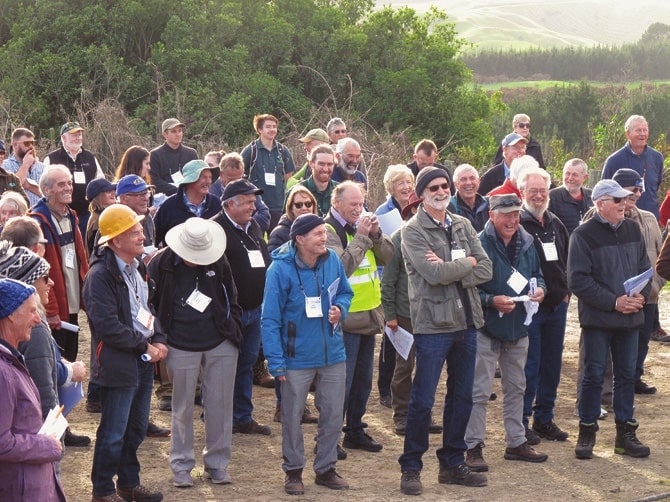
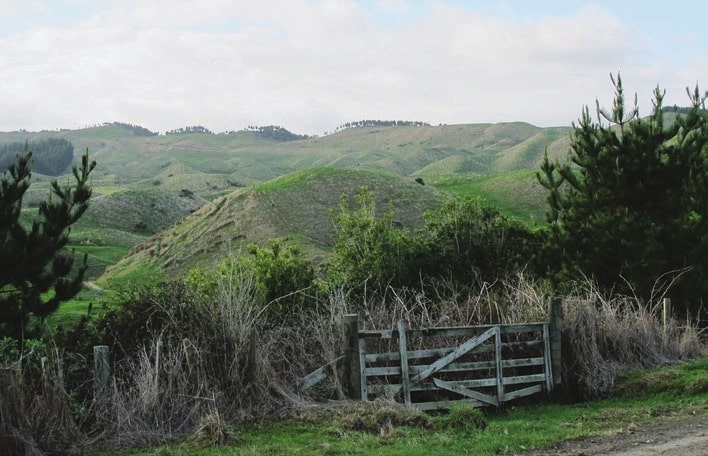
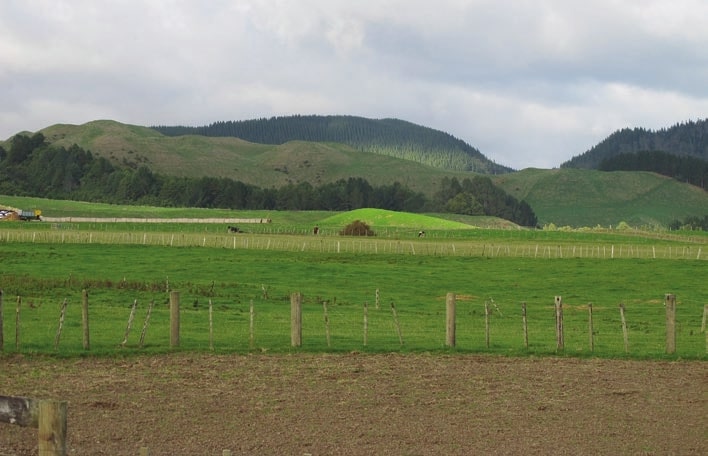
Nitrogen reduction
A total of 755 tonnes of nitrogen, mainly in the form of nitrates in the soil, are leached into Lake Rotorua every year. The target is to get the level back to what it was 50 years ago when about 400 tonnes a year went into the lake. To reduce the amount by over 350 tonnes a year, 50 tonnes are removed by waste water treatment, 120 tonnes by applying leaching rules, 30 tonnes by removing gorse which puts nitrates in the soil and finally 100 tonnes by incentivising land use changes. As a result, dairy farming in the catchment of the lake is becoming a sunset industry because over 70 per cent of the nitrogen has been coming from the dairy farms. The benchmark date was set in 2008. At that time Ngati Whakawae decided to pull out of dairy farms, when milk was fetching quite a good price, and ‘banked’ the nitrogen levels while moving into forestry.
A number of farmers have a problem with the devaluation of their land. Dairy farming is not going to continue the same way it has been in recent years, although the process to change land use has been taking many years with the court cases still not settled.
A few questions answered
There were many questions from those listening, as you might expect. With regard to the trees being pruned, the answer was that about 20 per cent of the trees are being pruned but pruning is still being evaluated. However, they are keen for the smaller woodlots to be pruned.
When asked about planting redwoods the answer was that this species would be considered but only for carbon farming. They were less keen on planting natives. They would like to plant more, but there is no profit and they are required to make a profit on their business.
Finally, cypress got the thumbs down as well because we were told the prices do not justify growing them. There was no premium for pruned cypress trees and if they were not around 70 years old, they were told that mills were not interested.
Forestry in a gully at Shapley’s
Later in the morning we travelled to Shapley’s property and walked down into an area of recent harvesting where we were introduced to Todd Cheeseman from Waipa Forest Management. The area covers 97 hectares with 45 hectares of pines planted in 1995, along with around five hectares of the cypress lusitanica. The remainder contains 30 hectares of native vegetation, 12 hectares of pasture and a couple of hectares in redwoods.
The main reason for the visit was to discuss the harvesting which was taking place. Because the ground is very erodible, the land is classed as either orange or red for erodibility and a special resource consent was needed before harvesting could start. The harvesting is ground-based with logs cut to length in the bush at the rate of around 1,000 tonnes a week. So far, 14,000 tonnes have been removed which is about half way through the process. The yield is about 660 tonnes a hectare for a 24-year-old crop.
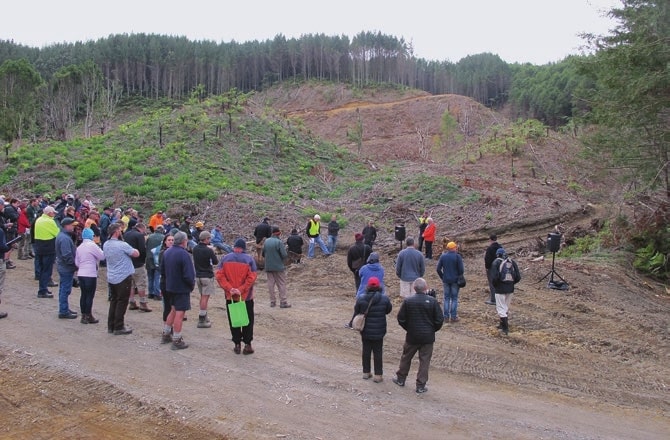
Why not more cypress?
One of the main questions raised was why radiata had been the main species planted and not more cypress? Apparently, the lusitanica have been determined to be a waste of time. The land was planted in this longer-term species because Environment Bay of Plenty asked them to do so to help prevent erosion. But the land owner said there were no rate concessions for keeping the trees so did not see why he should keep them. Todd thought he may have a market for the cypress and if he was right, they would be harvested and not sprayed.
The owner said he will probably not harvest them, just spray them with a helicopter because they cannot get a price guarantee when they are due for harvest in 20 years, although a questioner raised the point that you cannot guarantee a price for pine in 20 years. It was agreed that this may be the case but a judgment call is being made based on today.
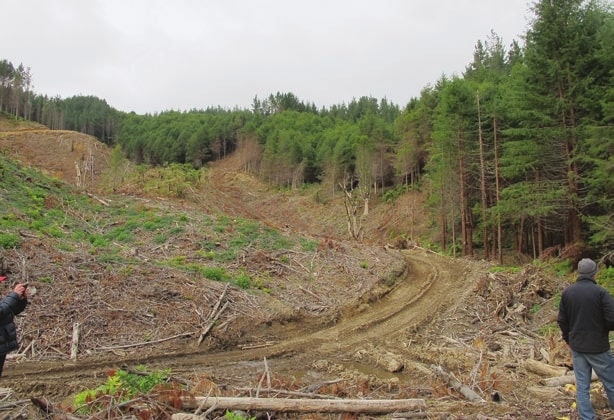
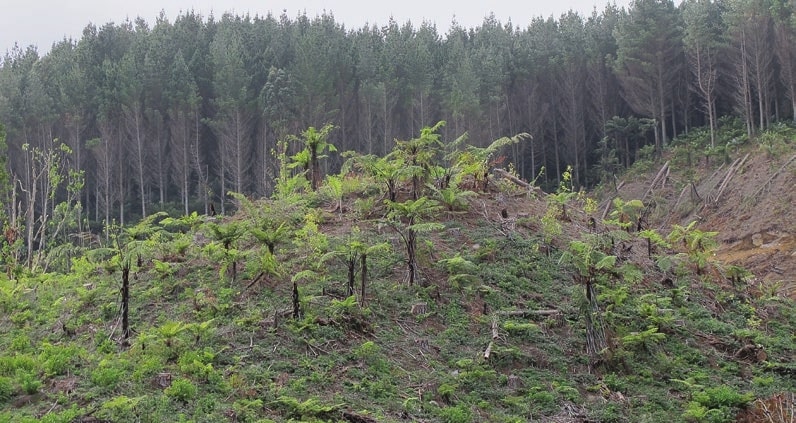
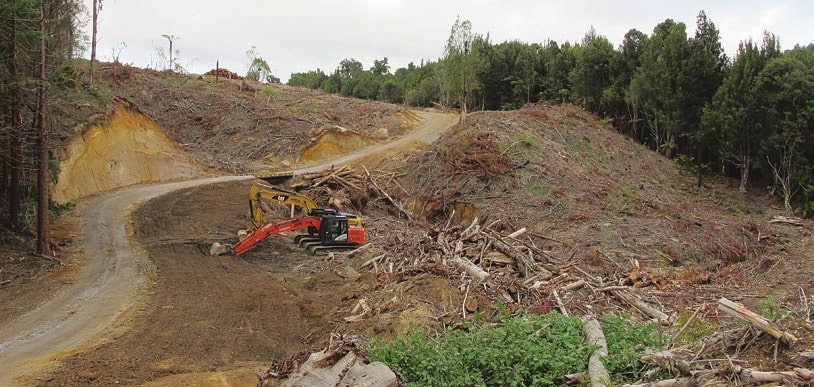
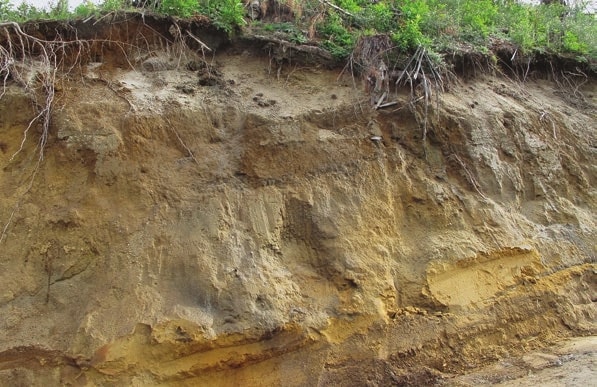
Some of the harvesting costs
Until they planted in pines, the bridge at the bottom of the road was often nearly under water. The trees soak up the water which has been quite an environmental benefit. They will be replanting, partly because the road has cost so much, but it will keep the soil on the land in the wet weather.
Someone asked if there had been a pre-harvest inventory. The answer was partly yes, because the neighbour wanted to harvest at the same time so it became a joint project. Pre-harvest inventory is an extra cost so we were told that if you get a good contractor there is no need. The neighbour did have an inventory carried out and were told that for their 11 hectares there were 715 recoverable tonnes a hectare. In reality, the harvest produced closer to 650 tonnes a hectare.
The cost of logging was variable at just over $30 a tonne for the radiata pine. The cost for harvesting the cypress as they are now had not yet been agreed because the crew do not want to do it. They would rather cut radiata as it is a lot easier work.
The total cost for roading came out at about five dollars a tonne. The small bridge we could see nearby was difficult to get constructed. Those companies which were asked for a quote did not want to even come and have a look and the best quote they got unseen was $100,000. It was eventually constructed for less than half that cost.
After the harvest
When they start the replanting a significant setback from the gully, which is red zoned, will be required which is where they may plant natives. The land was used for sheep and beef before the pines were planted and then the autumn rain would erode the soil. Bunds were built to stop that and but they syphon out. The forestry totally changed the run-off and the land now probably could not be used for grazing although goats, possums and wallabies are a problem. Because the bridge was upgraded there is a potential for lifestyle blocks, which adds another dimension.

 Farm Forestry New Zealand
Farm Forestry New Zealand